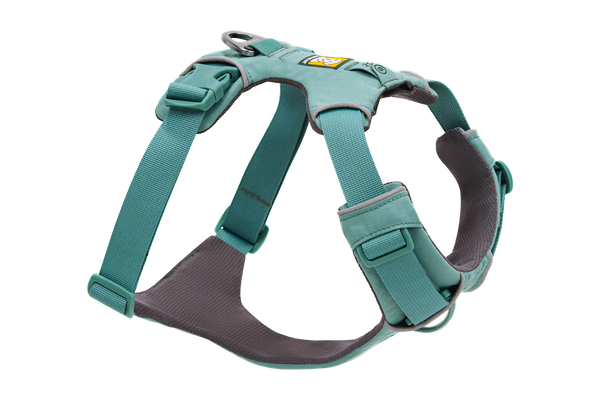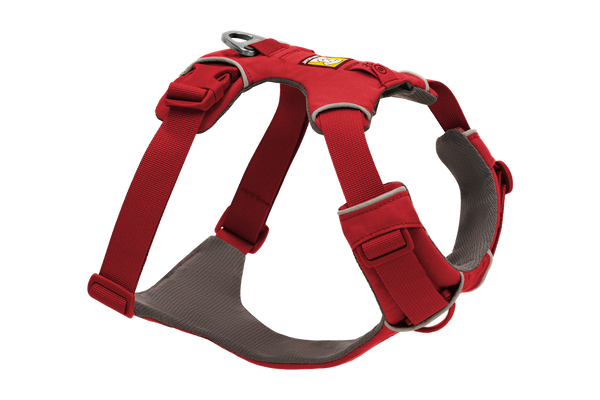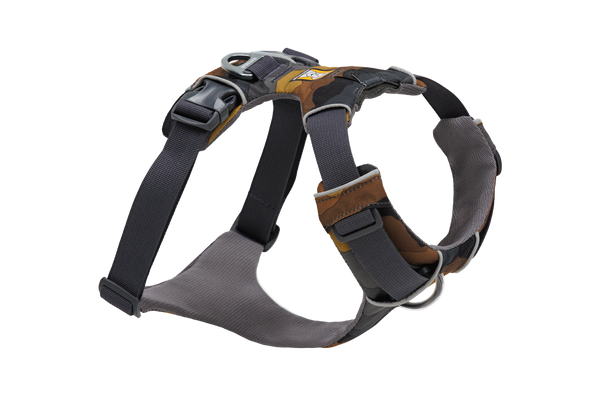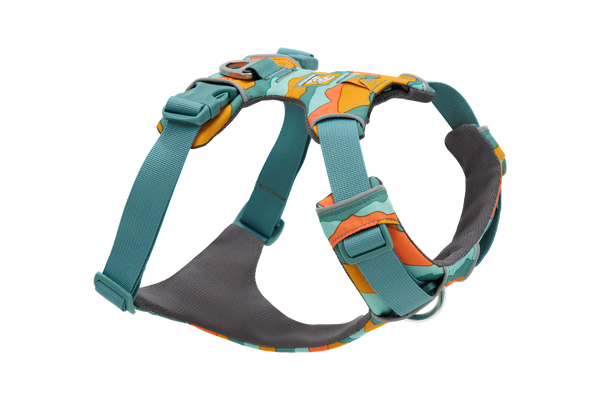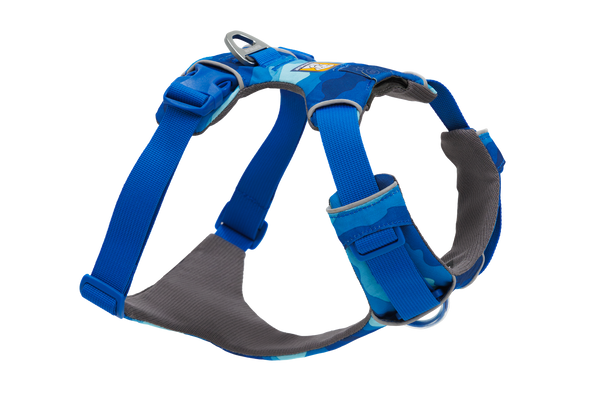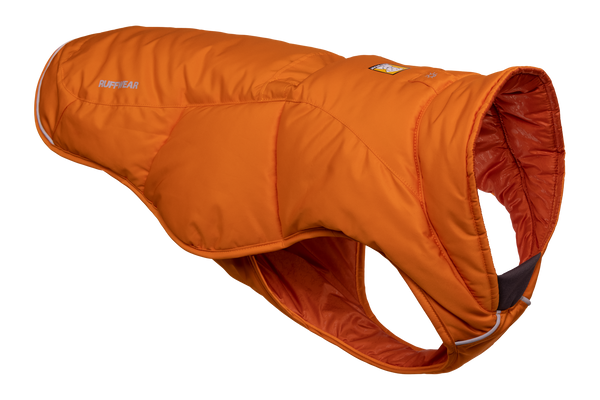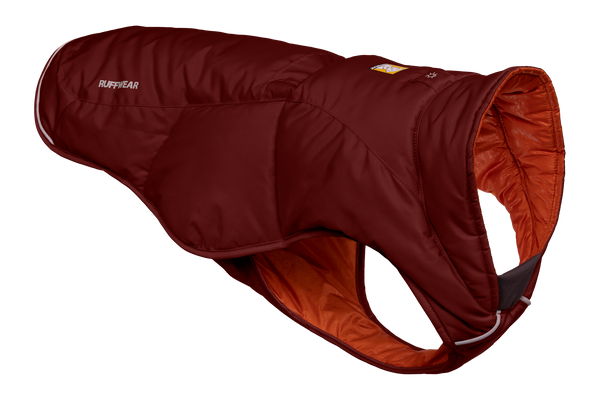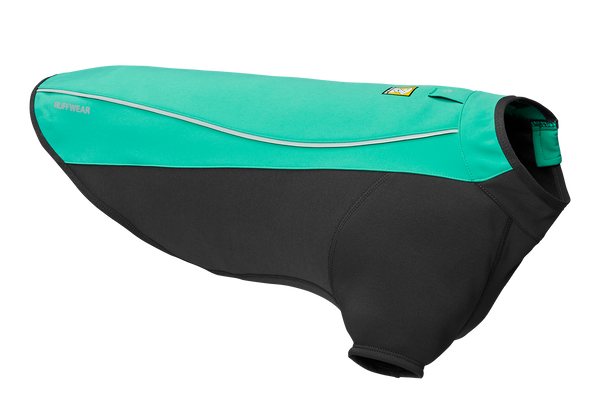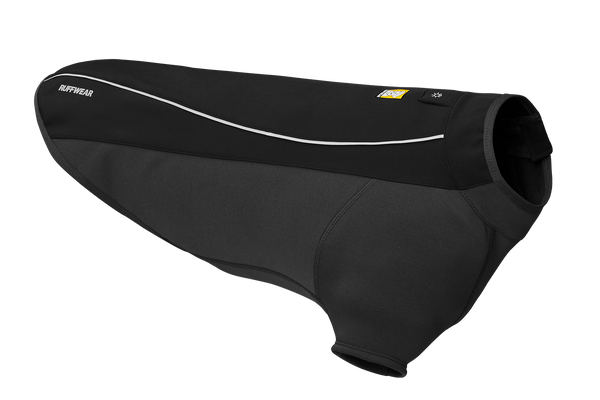Exploring Politely On-Leash Using the Front Range Harness
Story Contributed by Professional Dog Trainer Fanna Easter
For some reason, pet owners insist their dogs must wear a special dog training collar when teaching polite leash manners, but that’s not true. Collars don’t teach dogs polite manners, pet owners do. Plus, collars can cause injury when dogs pull against them. Instead, reach for a comfortable dog harness, six-foot leash, and lots of super yummy treats. Now, it’s time to get busy teaching your dog polite leash manners.
What are Polite Leash Manners?
Before teaching your dog a new skill, it’s important to understand exactly what it looks like upon completion. Polite leash manners are when a dog walks on leash without leash tension. During walks, dogs are able to walk to the end of the leash and circle around without their humans feeling any leash tension (e.g., leash being pulled forward). When teaching this behavior, humans must rely on their sense of touch instead of vision.
Polite leash manners are different than “heeling.” “Heeling” means a dog walks precisely next to her human’s left knee for an extended period of time, which is hard work for the dog.
Asking a dog to “heel” during a walk is impossible and not fair. Dogs need access to sniff and explore during walks, which is vital for mental stimulation and as important as physical exercise. Polite leash manners offer both for dogs.
Choosing a Harness
Choosing a comfortable, yet reliable, harness is key. Select a harness that allows free front leg movement without rubbing or chaffing of a dog’s chest or armpits. Comfortable harnesses should offer a minimum of four adjustable straps for a perfect snug fit. Harnesses should also fit snugly—a pinky finger should be able to slide between the harness and dog’s body. Loose harnesses will rotate and shift during a walk, which causes chaffing. Plus, some dogs learn how to take off a loose-fitting harness within seconds.

Body harnesses have come a long way! By far, my favorite harness is Ruffwear’s Front Range® Harness. As a professional dog trainer, I’m extremely picky about dog equipment. My standards and expectations are demanding. A fellow and respected dog trainer recommended Ruffwear’s harness, and it has certainly lived up to my expectations.
This harness is well made, and offers two leash attachments for ultimate control of strong-pulling dogs. When strong-pulling dogs pull on leash while wearing this harness, the front chest attachment redirects the dogs’ shoulders sideways. Once a dog is taught how to walk politely on leash, attach the leash to the top harness attachment.

How to Teach Polite Leash Manners
Many dog owners avoid body harnesses because they’re unable to control a strong-pulling dog. This concern is completely understandable, but controlling and teaching a dog are two totally different behaviors. Owners require easy control of strong-pulling dogs until dogs are positively taught how to walk politely on leash. Of course, this behavior can absolutely be taught positively and super quickly without force or pain.
Treats Make Learning Easier
Once your dog is fitted snugly into a body harness, attach a six-foot leash to the chest attachment of the harness. You’ll need lots of super yummy treats, such as baked chicken, cubed cheese or chopped up hot dogs, broken into pea-sized bites. Place treats into a plastic bag and put it in your front pocket for easy access. Remember, treats aren’t bribery. Treats are your dog’s paycheck for choosing to release leash pressure. Also, giving your dog human food won’t cause begging. Feeding your dog from the dinner table or your plate will.
Reward No Leash Tension
To get started, shorten your leash to 3 feet and practice inside your home. Your only job is to reward your dog when no tension is felt on the leash. Rely on your sense of touch and not vision. The moment you feel tension release, say “yes” (or click), then toss a treat right next to your shoe. Marking a behavior is powerful because it means, “yes, you got it right and earned a treat.” Tossing earned treats on the ground right next to your shoe teaches your dog to return to you for treats. Soon, your dog learns that treats appear close to you, so she learns to hang close by.
Take one step forward and wait. The moment you feel tension release on the leash, mark and toss the reward next to your shoe. Take another step forward and practice again. Sometimes, it may take a few seconds for a dog to release tension, so patience is virtue in this situation. The second you feel tension release, say “yes” and toss another treat next to your shoe. Practice for another minute, and then end the session. Each day, practice for 1-2 minutes indoors.
Making It Harder
Once your dog walks politely on leash indoors, it’s time to take it outside. There are many more distractions outdoors, which is why it’s important to teach this behavior indoors first.
With your leashed dog, take one step outside and reward for no leash tension. Once your dog is able to walk around the backyard with no leash tension, it’s time to practice on the neighborhood sidewalk. Remember, when practicing polite manners in a new situation (e.g. park, new neighborhood), make it easy for your dog by taking one step at a time in the beginning. Move at your dog’s pace. It’s tempting to pull on leash when a squirrel scrambles up a tree nearby.
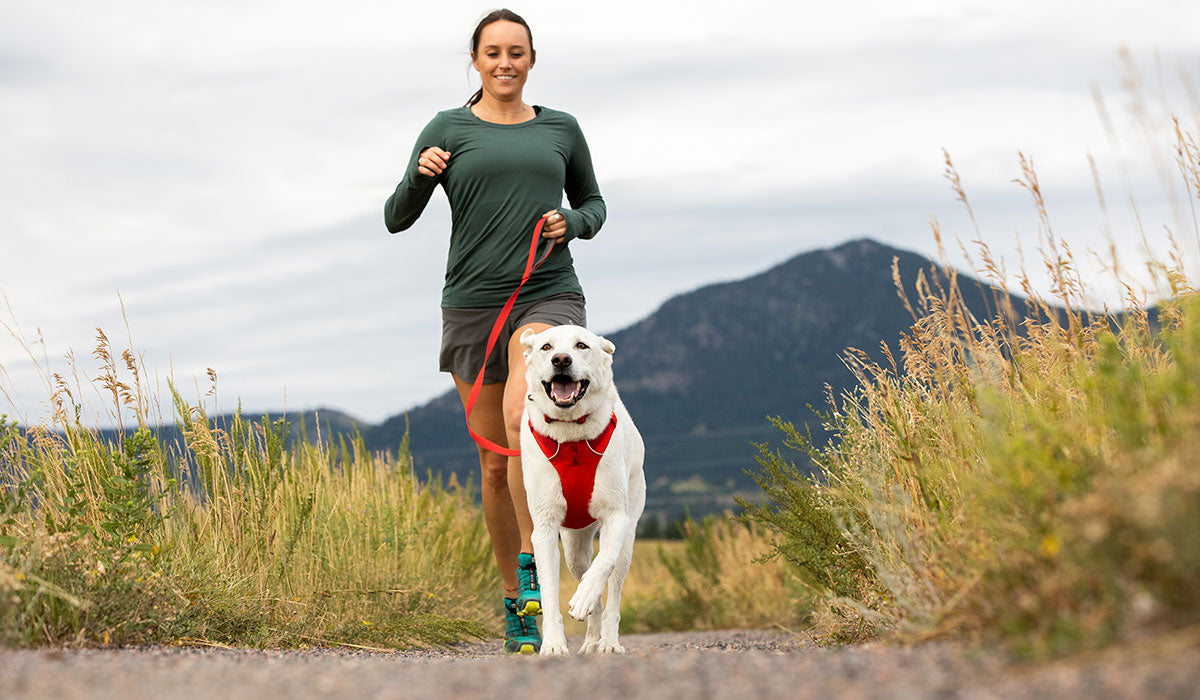
Learning is hard work, so don’t be concerned your dog didn’t walk a mile during your training session. Mental stimulation is as exhausting as physical exercise. You’ll soon walk a mile with no pulling.
One More Important Training Tip
Randomly reward your dog during walks. Many owners reward dogs in the beginning, but soon good behavior fades away. Keep your dog’s polite manners sharp by randomly rewarding your dog when no tension is on the leash. Personally, I reward my dogs when they choose to release leash tension as a squirrel runs past, or see a dog far off in the distance. If you reward good behavior, it will stick around forever.
___
Fanna Easter CPDT-KA, KPA CTP, ABCDT-L2 is a professional dog trainer and lead writer for Dog Training Nation. She owns Positive Pooch Dog Training, which specializes in dog reactivity. Also, Fanna teaches reactive dog group classes in Dallas, TX, with a veterinary behaviorist. http://www.dogtrainingnation.com/



